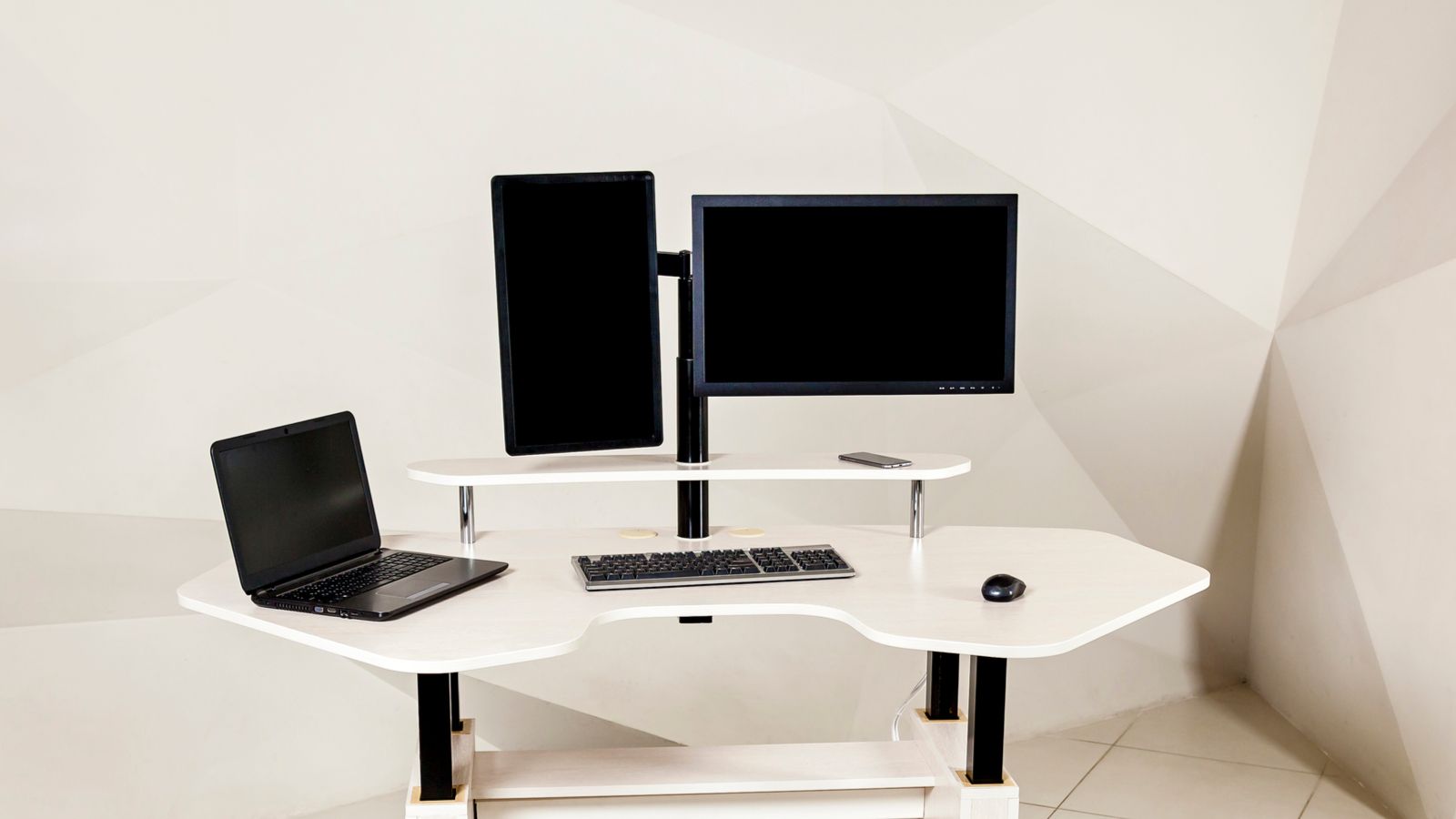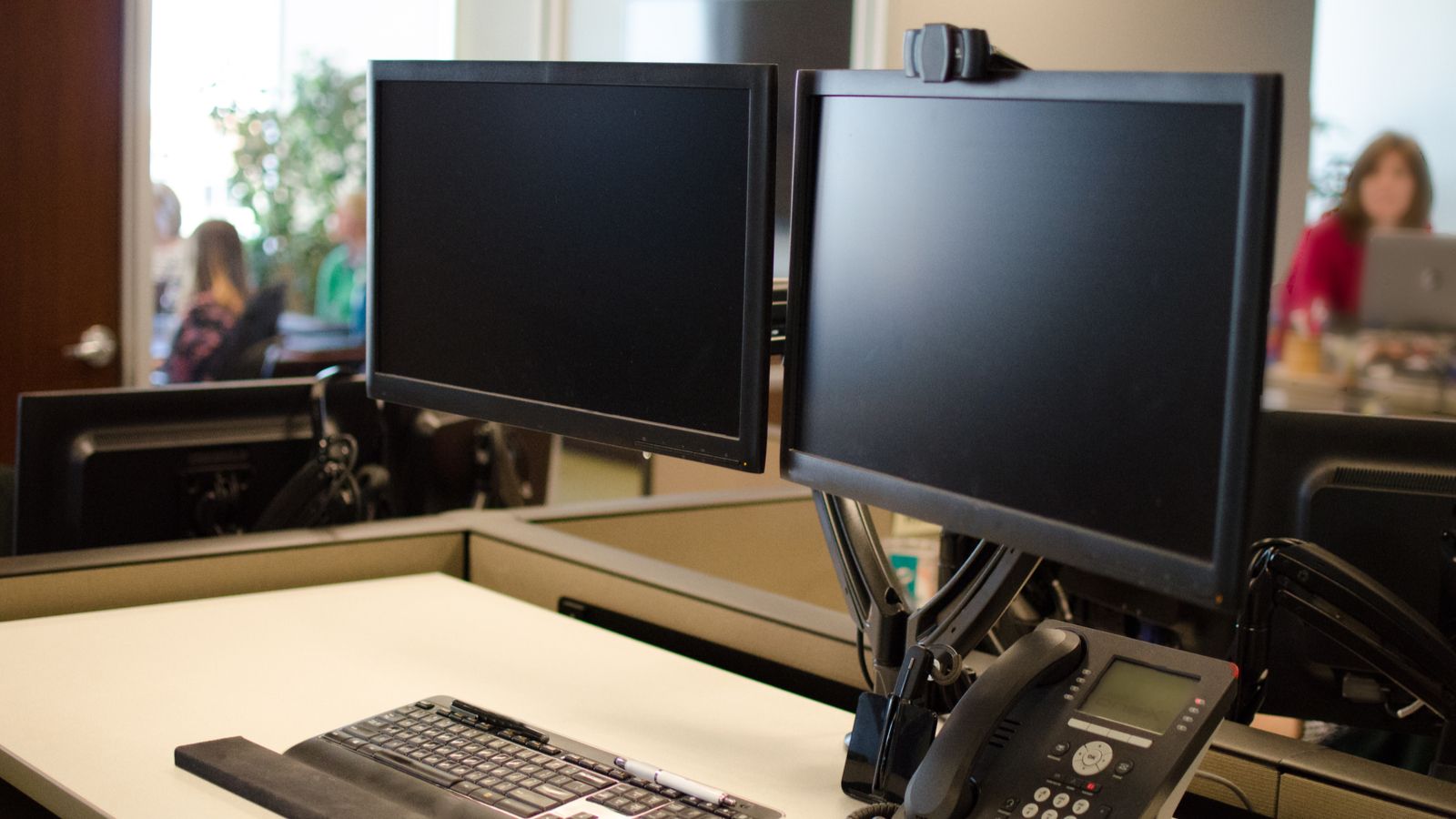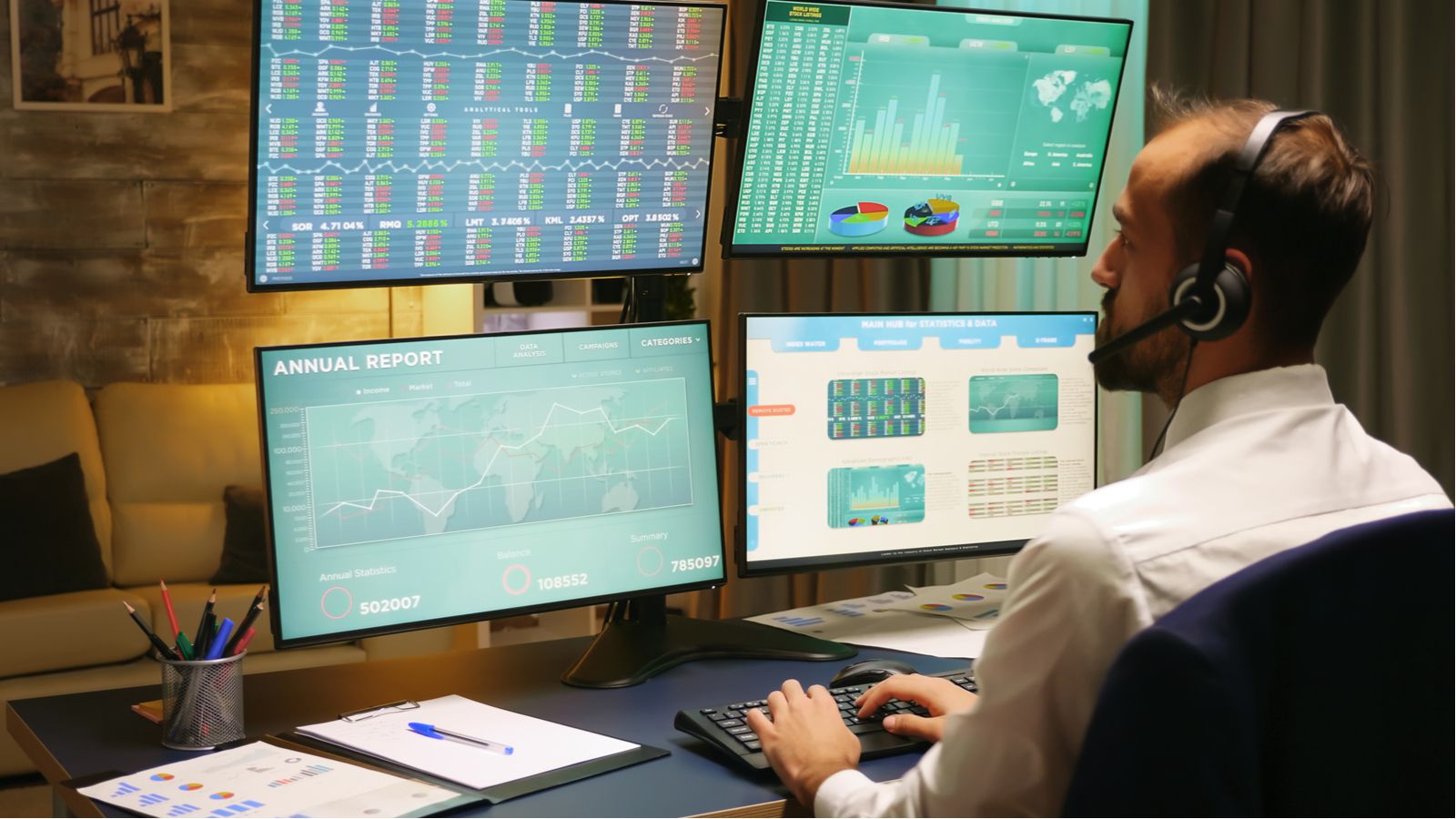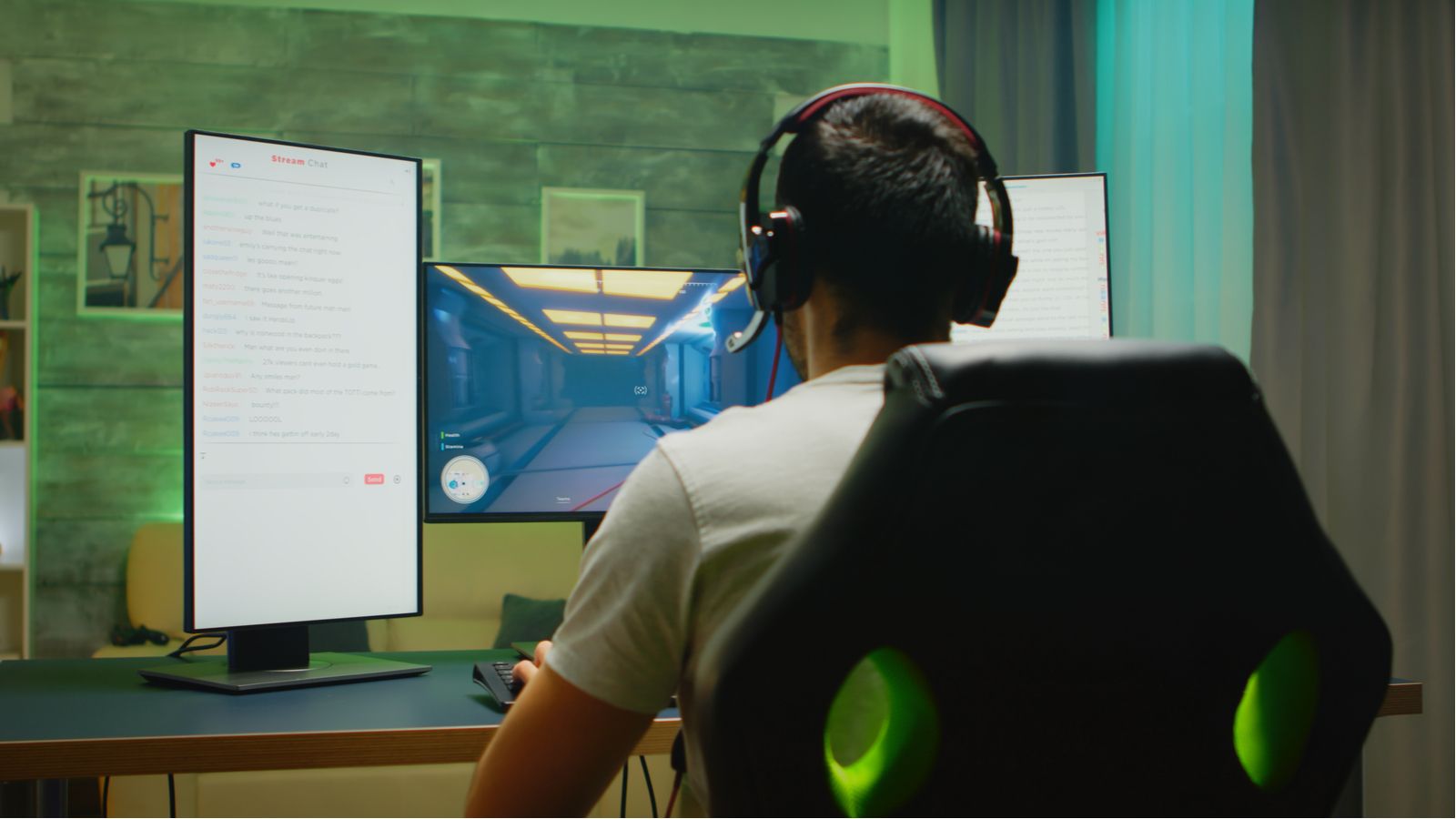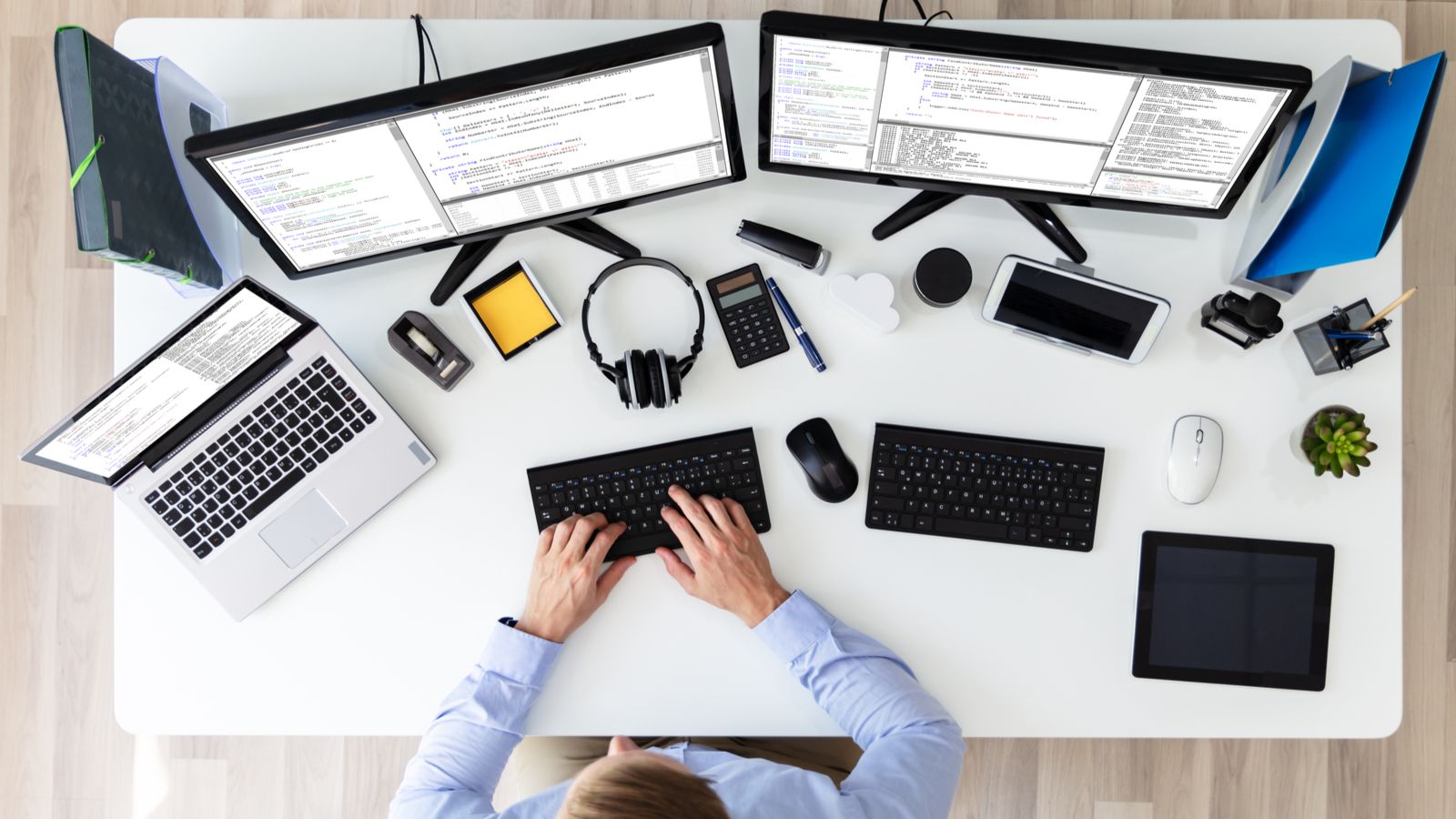If you're considering a multiple monitor setup, you might just slap a pair of screens side-by-side and call it a day. That's cool and it'll work just fine, but it's not the only way. In fact, depending on your specific needs, there might be a better way to maximize your multiscreen setup. Let's talk about your options.
The Side-by-Side
This is definitely the layout most people default to. Putting your monitors, whether it's two or three, side-by-side is one of the easiest layouts to set up and offers a lot of flexibility. It doesn't take much to turn your head to the side to check something, so you can have a lot open on each monitor.
The only real downside to this layout is it can take up a lot of desk space. Getting a dual/triple monitor mount can alleviate this though by freeing up more surface area. Still, there's a reason why this layout is so common: It's easy and functional—not much more you can ask for.
Stack Em'
Stacking monitors fills in a lot of weaknesses of the side-by-side layout while also losing its strengths. Stacked monitors take up less surface area, but it's also much more uncomfortable to crane your neck up than looking to your side. This limits the top monitor to just performing side tasks you won't need to look at too often.
You can also place your secondary monitor below your main display; while that eats up a lot of desk space, it's also far more comfortable to look down than up. Another advantage of having the monitor below your main display is if it's a touch screen monitor, you can easily use that to navigate your computer. Stacking monitors in general also means it's easier to have one large ultrawide monitor alongside your secondary displays—doing that with a side-by-side setup is a bit trickier.
Of course, to do any of this you'll almost certainly need a stand that supports stacking monitors. There are plenty out there, but you'll need to find one that works for your setup.
Landscape vs. Portrait
Another thing many stands will let you do is to rotate your monitor 180 degrees to be used in portrait mode. While this is horrendous for a lot of pieces of software because they're designed with widescreen in mind, for specific types of work it can be extremely useful.
One of the main ones is programming—having all that extra vertical real estate to view code comes in handy. Stuff like writing and reading also receive similar benefits. Even for traditional programs, if they don't require much horizontal space, then stacking them on top of each other on a vertical display can actually be very efficient.
It's certainly not for everyone, and if you're the type of person to benefit from a portrait monitor you've likely already considered it. You can use any monitor for this, you'll just need to pick up a monitor stand that enables you to rotate it into the proper orientation (which the vast majority of monitor stands will). If you need as much vertical space as possible, then an ultrawide monitor is the way to go. You'll also need to go into the display settings on your computer to finalize this change.
Non-Monitor Monitors
Before wrapping up, let's go over a few options that don't include standard monitors.
The main non-monitor displays people use are TVs and tablets. TVs offer much larger screens than your standard monitor and are great for secondary displays. If you need a larger canvas for whatever you're working on, a TV might be the way to go. But you likely won't want a massive TV just resting on your desk, so you can either mount these on the wall above or beside your desk setup. Standard wall mounts work fine for this, but you can also use an extendable mount if you want to be able to pull the TV closer or further away, depending on what you're doing—just make sure it can fit your TV.
Tablets are very different from TVs bringing much smaller displays to the table, but they can still be extremely useful. You can even have multiple tablets on your desk connected to your PC, and use their touchscreens for specific tasks. Maybe you want to have your notes open on a tablet while you work on a project on your main displays, this prevents you from having to switch programs as often. Touchscreen displays are also more useful for specific types of work, like drawing and photo editing.
Drawing tablets are also worth consideration, as they're specifically designed to be used with a computer and usually come in larger sizes than your standard iPad. These work excellently when it comes to creative work thanks to their larger screens and specialized tablet pens, which usually include a couple of neat features (like reprogrammable buttons).
You could also connect a laptop to your computer to act as a secondary display. Even if it's a laptop you use regularly, it can a nice, non-permanent upgrade to your monitor repertoire. And if you have an old laptop lying around that doesn't get much use, leaving it on your desk is a great way to repurpose it.
What's the Best?
There is no one correct way to set up your monitors, but the freedom of choice you have is part of the fun. You can tailor your setup to fit your needs and only your needs, but the information gone over here will hopefully help inform your decisions. Of course, you can always mix-and-match these different setup methods to create something more ideal for you. Whether you go with the standard side-by-side dual monitor setup or a crazy stacked setup with eight monitors, just consider what you use your computer for and how you can best compliment that.

